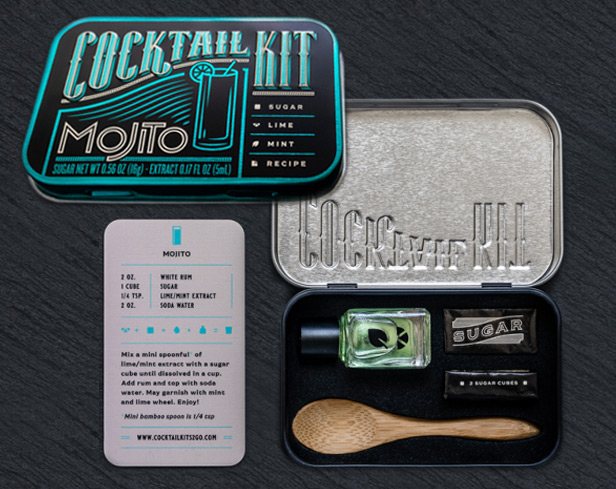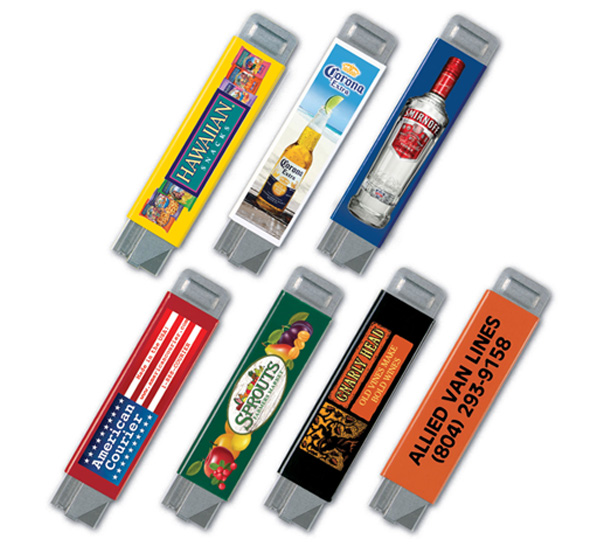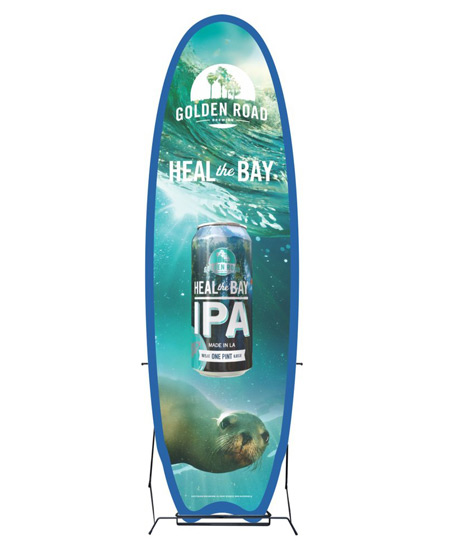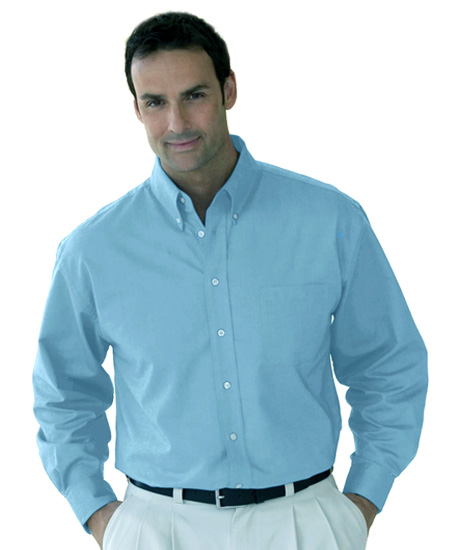March 25, 2021
Target the Adult Beverage Market
With more people consuming alcohol at home, companies have been compelled to shift how they promote their wares. Distributors can help.
As state and health officials ordered bars and restaurants closed to in-person dining in the early days of the pandemic, it became clear that the sector was in deep trouble. Even now, as states begin to ease restrictions significantly a year later, the traditional bar and restaurant industry has a long road to full recovery.
According to the National Restaurant Association, restaurants ended 2020 $240 billion below pre-pandemic forecasts for the year. Over 8 million workers were furloughed or laid off during the COVID peak, finishing 2020 with 2.5 million fewer jobs than before COVID. By December, 110,000 eateries were closed long term or permanently. The new $1.9 trillion American Rescue Plan Act, passed on March 7, includes a restaurant-specific aid package for the first time.

While bars and restaurants suffered, alcohol sales actually increased during the pandemic as people headed to retail stores and got ready to stay put in their homes for the foreseeable future. In March 2020, adult beverage sales increased by 55% as people stockpiled wine, beer and spirits. Sales remained high during the pandemic, and while experts predict they’ll drop over the next few weeks as states loosen their restrictions, retail sales are still about 20% to 30% higher in March 2021 compared to two years ago, according to research firm Nielsen.
But even with states announcing loosening restrictions, the collective trauma after a year of health fears means many won’t come rushing back to crowded bars and restaurants. Intelligence company Morning Consult found this month that only 44% of Americans feel safe eating inside restaurants, down from 51% in February as some areas see virus cases increase.
With changing consumer preferences and habits, savvy adult beverage brands have had to change their marketing strategies to get in front of consumers where they are. This year, there’s been a renewed focus on retail stores as people shop for home alcohol consumption.
National Retail Solutions (NRS) saw this shift to convenience store shopping firsthand. The Newark, NJ-based point-of-sale company sells cash register systems for small convenience stores and bodegas, often in cities. NRS, which now has 12,000 stores across the country in its network, often helps them upgrade from rudimentary systems like cash boxes and can track store data to help make better buying decisions.
“The owner works behind the counter in a lot of these places,” says Suzy Silliman, senior vice president of data strategy and sales at NRS. “They know the neighborhood, they’re on a first-name basis with the customers, and they have freedom and flexibility in changing the product mix. When there were supply chain issues during the pandemic, chains had empty shelves because they couldn’t easily change suppliers. These owners could pivot during the panic buying and go with another supplier, so they still had paper products when others didn’t.”
In addition to pandemic must-haves like toilet paper, shoppers also flocked to these independent stores when bars and restaurants were closed.
“While people will head back to bars and restaurants for the full experience, the ease and affordability of mixing drinks at home is here to stay.” Justin Durling, Cocktail Kits 2 Go (asi/45579)
“Based on our data, convenience stores have definitely seen an increase in alcohol sales this year, and adult beverage companies are now taking them more seriously,” says Eli Korn, chief operating officer at NRS. “Stores can use our data to figure out what’s selling and just order what their customers want. They don’t have to talk to corporate to get new products in.”
Those alcohol companies that haven’t yet started targeting smaller retail stores are missing an opportunity, says Silliman. For example, since the beginning of lockdowns, NRS’s store network added 800 more premium wine SKUs to its offerings.
“Even when we’re free and clear of COVID, people will most likely still want to consume alcohol at home and not crowd into bars,” she says. “How and where we consume has changed for good. It’s going to take a long time for the pendulum to swing back totally, if ever. We’re seeing more beverage brands open their mind to inner-city independent stores. They could benefit from it, but if they’re not looking to these stores, they’re missing market share.”
When the shutdowns first began, the promo industry saw increased demand for at-home cocktail kits in drop-shipped gifts. By January, Justin Durling, owner/maker at Cocktail Kits 2 Go (asi/45579), says 80% of their corporate business was repeat. While sales have slowed a bit from their pandemic highs, Durling says people are more comfortable than ever with making their own drinks at home.
“They buy a few bottles of their favorite alcohol and play around with our mixers,” he says. “While people will head back to bars and restaurants for the full experience, the ease and affordability of mixing drinks at home is here to stay. It saves a tremendous amount of money, people can make it when and how they want and it’s an opportunity to connect with friends and family.”

The Mojito kit contains lime/mint elixir, sugar cubes and a muddler spoon; from Cocktail Kits 2 Go (asi/45579), cocktailkits2go.com
Ellyn Bresinger, owner of Promo Key in Manchester, NH, says nearby beer wholesalers are having their best year ever as they continue to get their product stocked at retail. “They sell to grocery stores and gas stations,” she says. “Restaurants are at the bottom of their sales right now. I mostly sell uniforms to them, along with work-related items like pens, box cutters, safety vests, lunch boxes and tumblers.”

Beverage companies can give out branded box cutters, like this Handy Cutter (AiO-HCR) to delivery teams as well as store owners for daily use; from ALL-IN-ONE (asi/34256), allinoneline.com
Mike Goebel, president of Proforma One Marketing (asi/491928) in El Dorado Hills, CA, has large clients in the adult beverage industry and has helped them shift their marketing efforts significantly. Because of fewer (or no) people in bars and restaurants as a result of COVID, clients are spending much less on traditional on-premise items like corkscrews, bottle openers, glassware and napkins. Instead, they’re focusing more on large signs and display items for off-premise retail locations, as well as bikes, firepits and pizza ovens, and apparel for their sales forces.

Consider unique large-scale displays like this surfboard with a vinyl graphic to draw attention to alcohol brands in stock at a given retailer; from MBS Promo Boards (asi/40712), promoboards.com
“They’re now competing for their share of limited floor space at retail, and it’s critical for them to be a featured brand on display at grocery,” says Goebel. “Retail beverage buyers are very data-driven, so display improves purchase trends, which affects a store’s product selection, shelf placement and new item acceptance and line extensions in stores.”
At Edventure Promotions (asi/186055) in Chicago, recent products for alcohol brands include, not barware and coasters, but retail customer-facing items like gravity dispenser racks, point-of-purchase displays, window graphics, shopper signage and digital promotions. “Our best work manifests itself when we combine our creativity and resourcefulness,” says President Ed Levy. “That’s where the fun is.”
As another way to drive traffic and alcohol sales, stores are getting creative in pushing product with add-on services like personalization. Desiree Colonna, CEO of Inkwell Designers (asi/553001) in Woodstock, GA, has recently offered on-site bottle engraving services at liquor retailers.

This Oxford shirt (1210) has stain-resistant and -release properties. It makes a sophisticated addition to uniform programs for alcohol brands’ sales teams; from Vantage Apparel (asi/93390), vantageapparel.com
“We’ve had steady business around the Atlanta area since COVID hit,” says Colonna. “There’s been a huge surge in purchases.”

Inkwell Designers has been helping to drive alcohol sales with engraving services at retail stores that sell alcohol.

Product Hub
Find the latest in quality products, must-know trends and fresh ideas for upcoming end-buyer campaigns.
